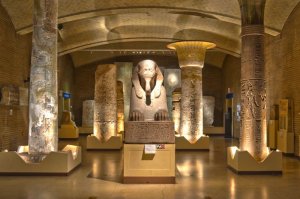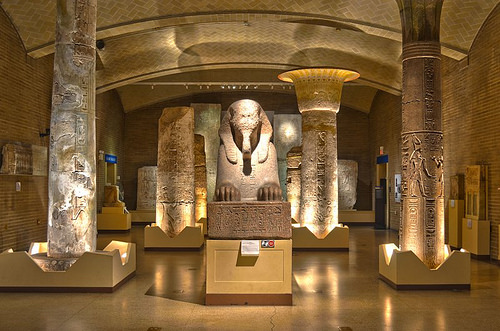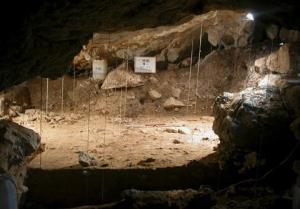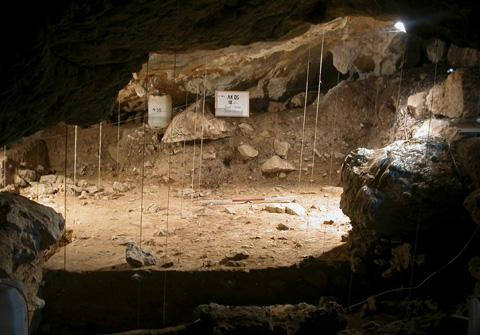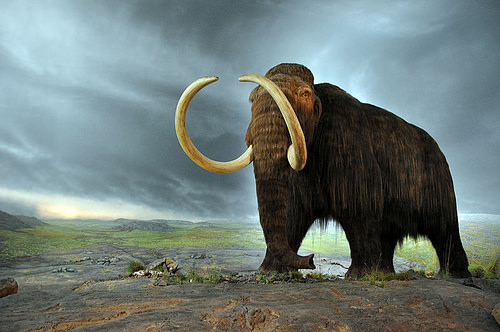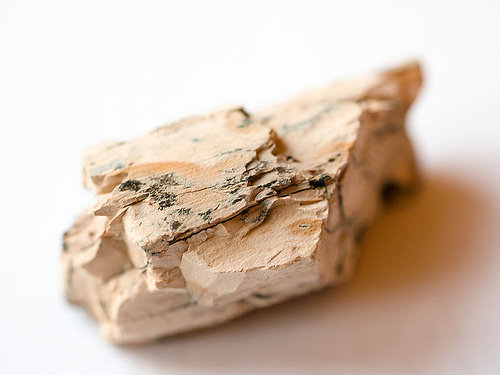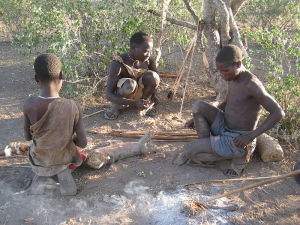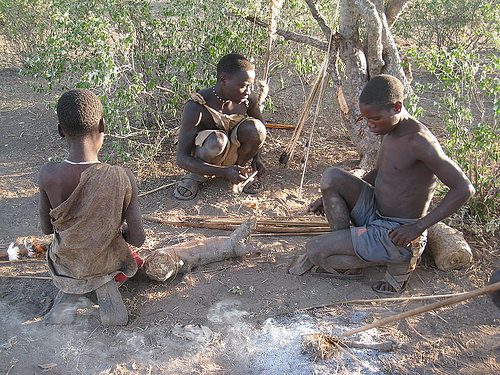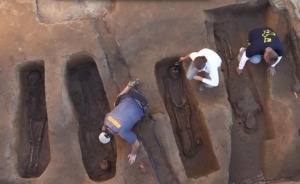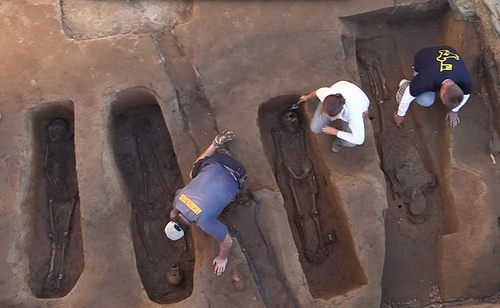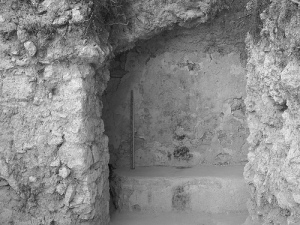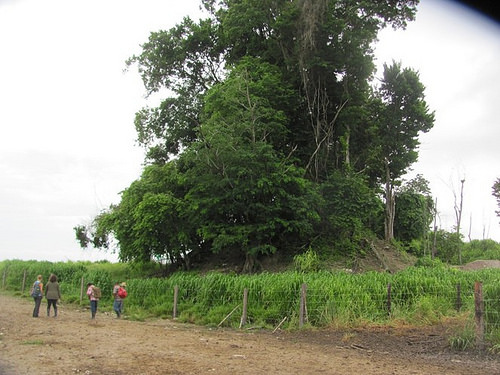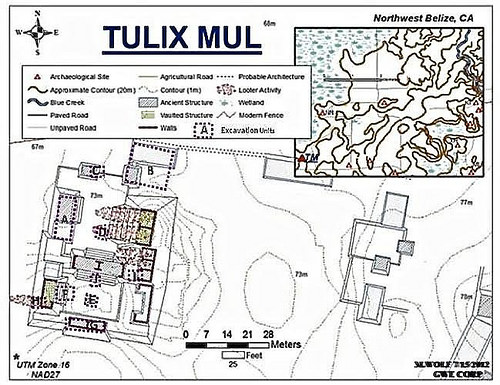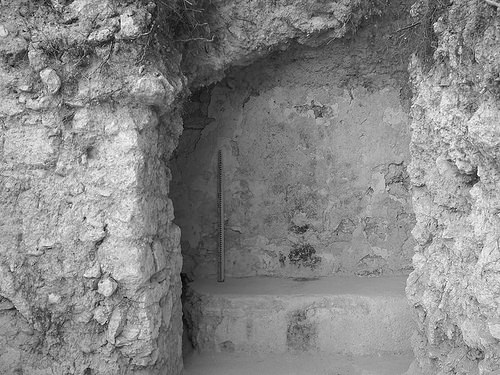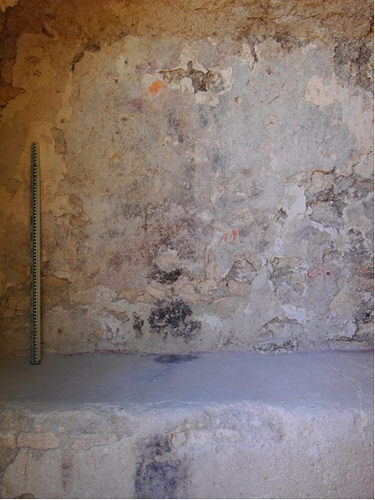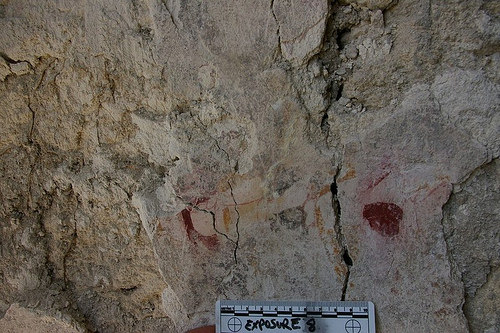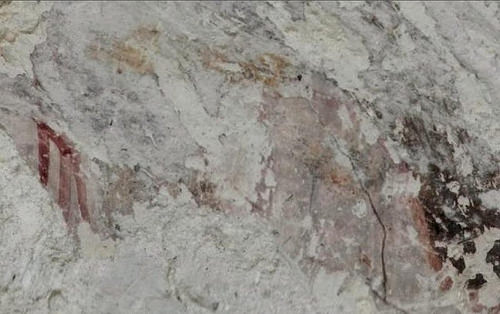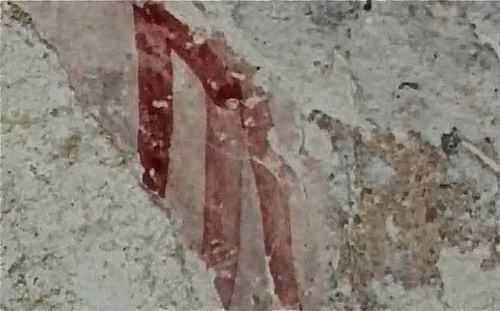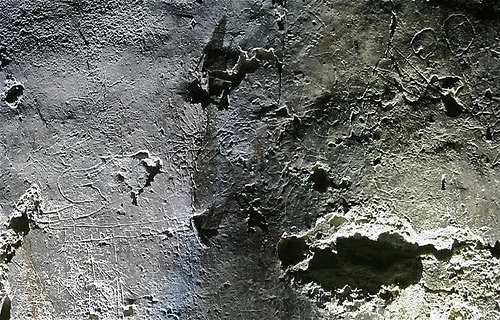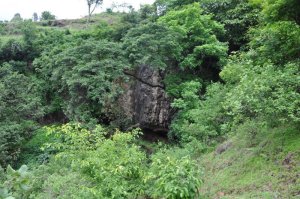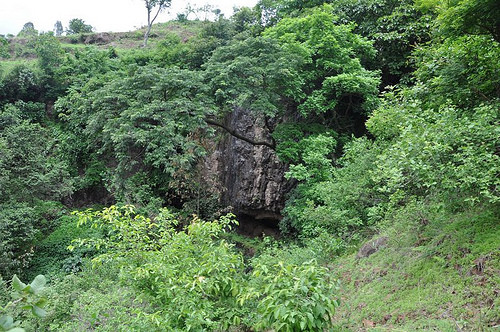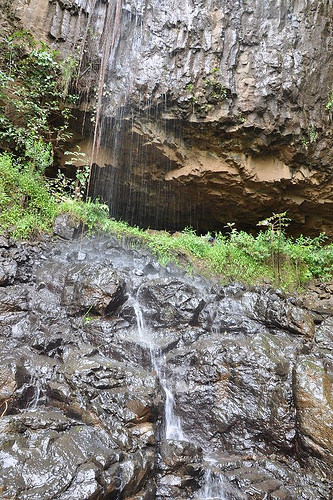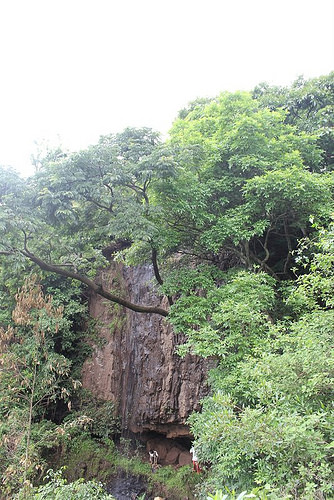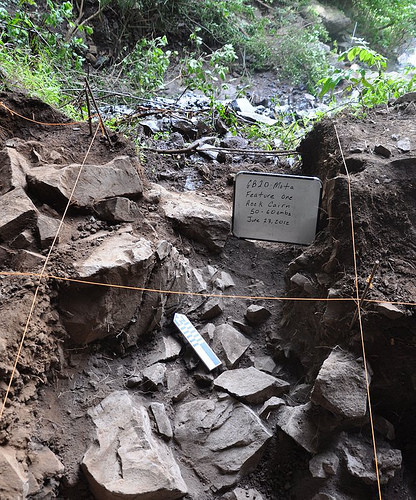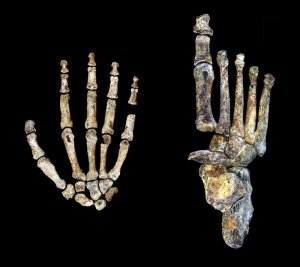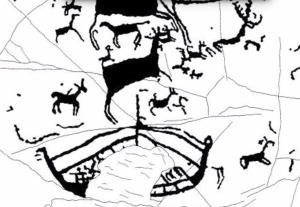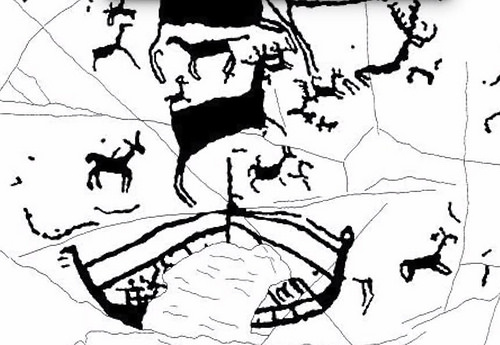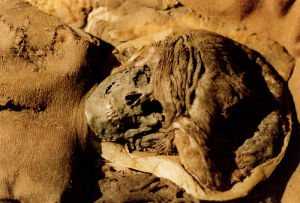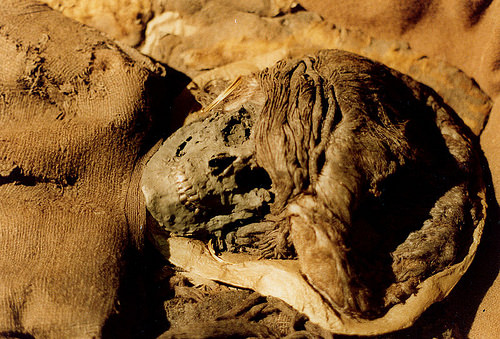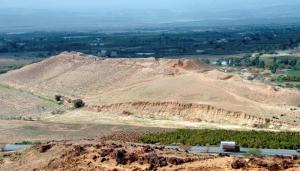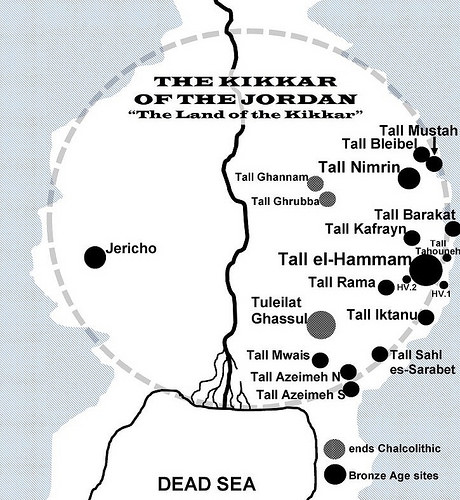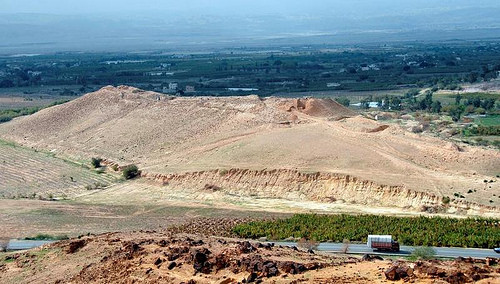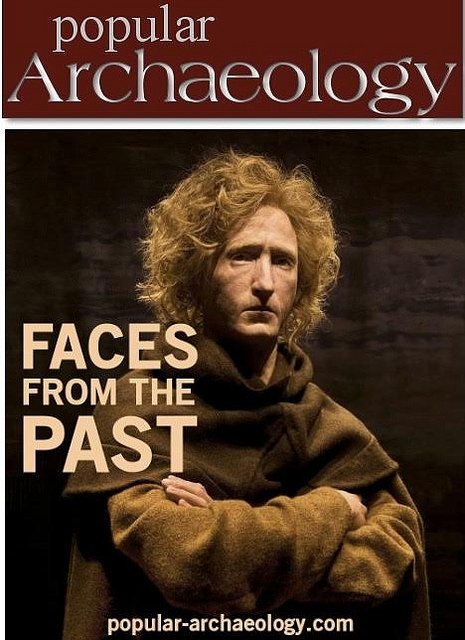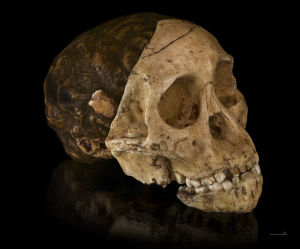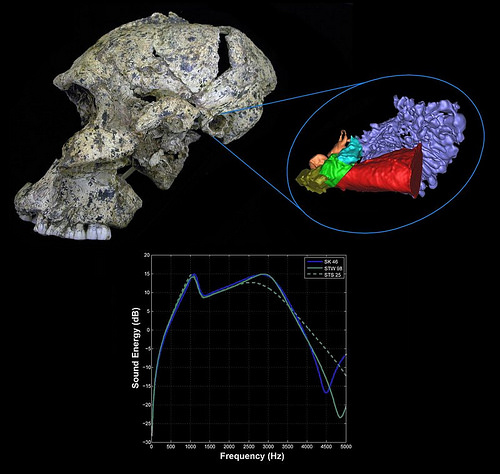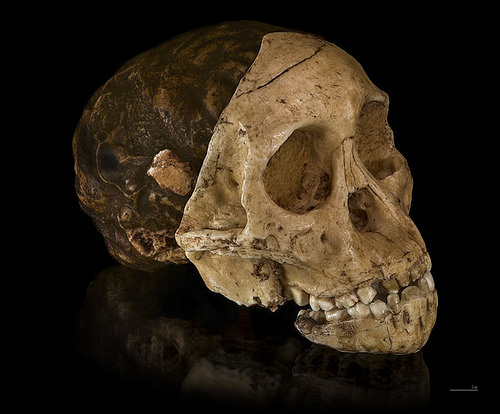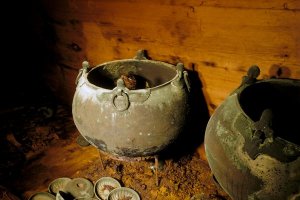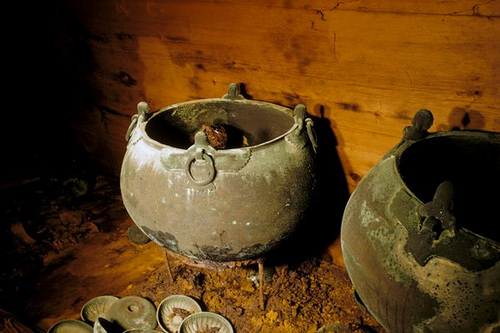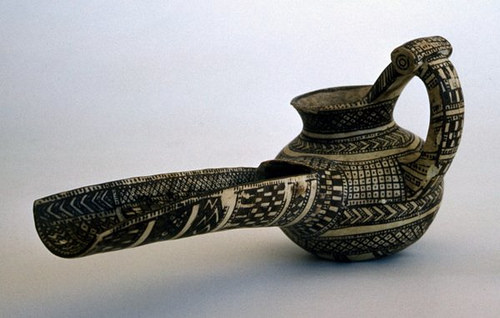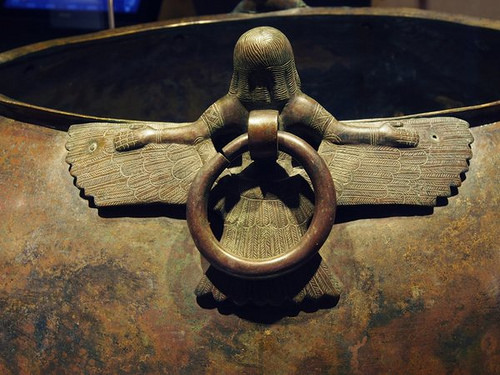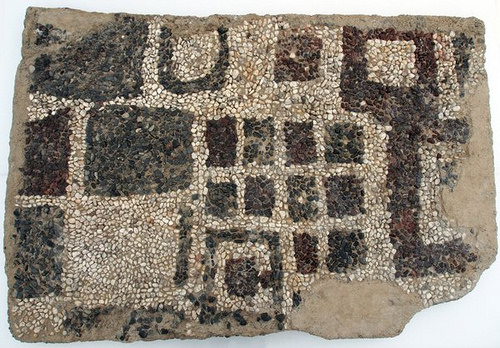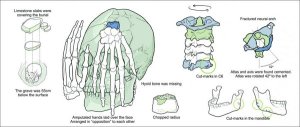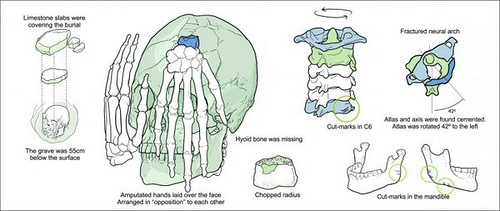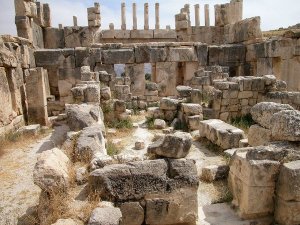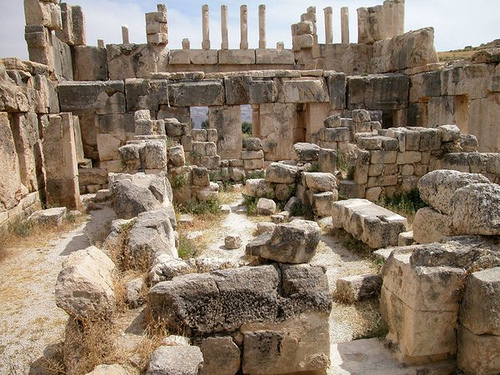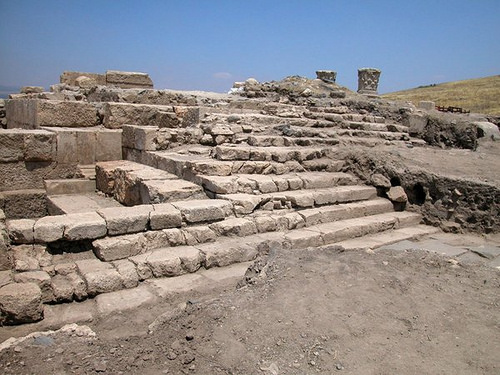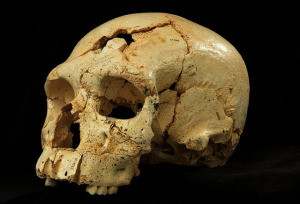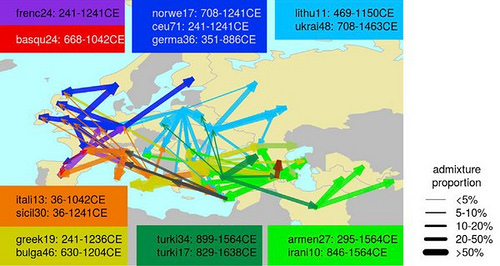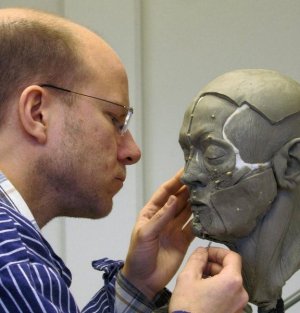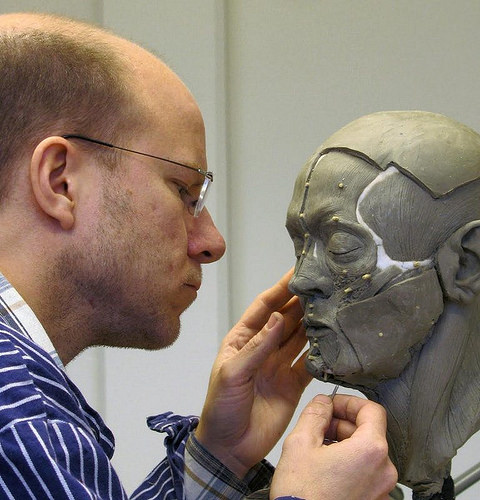
In his laboratory at the Smithsonian’s Museum of Natural History in Washington, D.C., Dr. Dennis Stanford hands me a slab of brown plaster. It’s a replica of a bone fragment – from a mastodon or a giant ground sloth – recovered from Vero Beach, Florida. On the slab is an etching of a mastodon, placed there by some unknown artist. The bone has become mineralized, making radiocarbon dating impossible, but we do know that the last mastodons disappeared from eastern North America some 12-13,000 years ago, making the etching at least that old. It could be much older than that, which would make this artifact part of a growing body of evidence that could overturn everything scientists once thought they knew about the peopling of the Americas.
At seventy-two, Dr. Stanford still is a redoubtable figure: bushy black eyebrows, thick unkempt gray hair, snow-white beard. It is quite easy to imagine him attired in sealskins, standing in the prow of one of the Ice Age longboats that he suggests may have carried the first human voyagers to the Americas. But Stanford is not a mariner by trade. He heads the Smithsonian Institution’s Paleo-Indian program.
Once upon a time, scientists believed they knew when, where, and how the first human beings arrived in North America. During the last Ice Age, bands of hunter-gatherers living in Siberia walked across the Bering Land Bridge and then southward, by means of an “ice-free corridor” which opened through the ice sheet that covered much of North America. By 11,500 BC, they had made it as far south as New Mexico, as evidenced by archaeological excavations that have unearthed evidence of a specific style of tool-making called Clovis, named after a nearby town. Clovis spear points were fashioned from a single stone, by means of what is called bifacial flaking. The people who made these tools went on to populate all of the Americas.
Some archaeologists are trying to challenge this tidy scenario. One of the chief challengers has been Dennis Stanford.
Stanford didn’t set out to be a spoiler. But as he attempted to follow the origins of Clovis technology back to its supposed origin in eastern Siberia, the trail went cold. The spear points used by the aboriginal Siberians look nothing like those recovered from Clovis. Rather, they are created by means of what is called “microblade” technology.
Stanford hands me a replica of such a point. Several flint blades, each created from a single flake of stone, are set in grooves in a bone handle.
So if Clovis technology didn’t come from Asia, as he suggests, where might it have originated? Stanford has advanced a radical hypothesis: Perhaps Clovis technology has its roots in Europe.
More than 20,000 years ago, inhabitants of what is today Western Europe employed a style of tool-making similar to that of Clovis, called Solutrean, named after the Rock of Solutré in eastern France. Some Solutreans congregated near the coast. They left behind carvings depicting auks, deep-sea fish such as salmon and tuna, and seals or walruses being harpooned or caught in nets. Stanford has suggested a daring alternative to traditional views, proposing a testable hypothesis that some Ice Age seafarers could have crossed the Atlantic Ocean from Europe to North America over 20,000 years ago.
Stanford notes that Europe during the Ice Ages was relatively devoid of trees, but they probably had access to driftwood, in the form of large fallen trees transported there by the Gulf Stream. They should have figured out that there was land to the west, somewhere beyond the horizon.
“These people weren’t bothered by cell phones and all this crap. They’re watching the sky every night, they’re watching this, they’re watching that. And they’re watching these big trees coming and they’re wondering, ‘Where in the Hell are all those big trees coming from? We don’t have ‘em over here.’ So they knew there was something over there.”
Back then the ice sheets extended as far south as 40 degrees north latitude. Seemingly endless herds of seals resting on the pack ice might have been an irresistible target for the Solutreans. These ancient mariners might have sallied forth in boats with sealskin stretched over wood frames, like those used by the modern-day Inuit. If you’re hunting seals, the more eyes you have to watch breathing holes the better your chance of success. Entire family groups might have joined in on these expeditions. As their long-distance seafaring capabilities grew, they might have ranged farther and farther until finally arriving on the coast of North America.
It’s not inconceivable. The Solutreans had eyed needles they could have used to stitch together sealskins to make boats and waterproof clothing. (Similar needles have been found in Clovis sites as well.) With sea levels lower than they are now, the distance they had to cross would have been about 1400 miles—shorter than the journey from Alaska to Greenland the Thule people are known to have made in prehistoric times.
Critics point to the complete lack of evidence of practical long-distance seafaring capability of any Ice Age peoples. But Stanford notes that the boats they would have used would have been made of perishable materials, and at any rate would have been submerged when sea levels rose as the ice sheet melted at the end of the last Ice Age.
Archaeologists have found evidence of human habitation antedating Clovis by thousands of years, including sites on the eastern shore of the Chesapeake Bay. Tools associated with these sites have a distinctly Solutrean look.
________________________________________
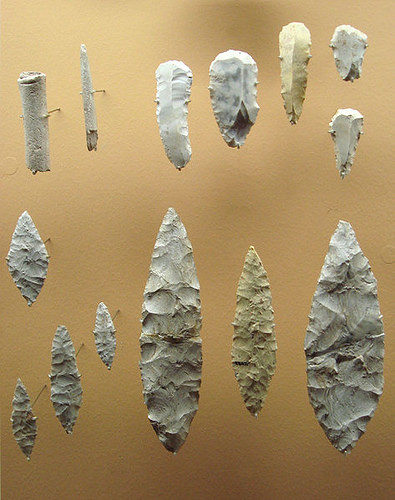
Above: Typical Solutrean style points and artifacts found in Europe. World Imaging, Wikimedia Commons
_________________________________________
Stanford shows me some other artifacts. In addition to bifacial spear points, there are bone points, spear throwers, bow drills, hammerstones, scrapers, and flat stones that still retain traces of birch sap, which may have been used to apply waterproof seals to their boats.
“Everything the Solutreans had, they have here,” Stanford explains. “Of course, that’s just coincidence.” Then he laughs that infectious laugh of his.
What’s more, these sites actually pre-date the existence of the ice-free corridor that is believed to have enabled the first Americans to travel here from Siberia. It’s possible that the first Americans came by traversing the margin of the ice sheet on the west coast, but that would actually be a longer journey than the proposed migration across the Atlantic.
Stanford opens another drawer and shows some spear points recovered from Tennessee. The points are over 14,000 years old, he says, which makes them older than Clovis points. Intriguingly, they seem intermediate in form between Solutrean and Clovis technology, providing a possible link between the two cultures.
He opens yet another drawer and pulls out a spear point he says archaeologists recovered while excavating the ruins of an eighteenth-century farmhouse in Virginia. X-ray fluorescence revealed the flint came from France. Stanford wanted to carry out a proper excavation, but the landowner refused to allow it. The state granted the owner permission to bulldoze the site.
“They said there’s no such thing as pre-Clovis culture anyway,” he adds, and again he laughs his infectious laugh.
Almost every part of Stanford’s argument has been vigorously disputed by the scientific community. Recent genetic studies have tended to support the East Asian/Siberian origins of Native Americans. And last year, James Walker and David Clinnick of Durham University published a critical appraisal of the Solutrean hypothesis in World Archaeology. In a telephone interview, Mr. Clinnick stated “For us, the Solutrean hypothesis is not a likely scenario. But as far as the other issue — how people came from East Asia into the Americas — I think we’re pretty open to multiple different conversations.”
Mr. Walker added, “There are different theories as to how the first people got to the Americas. And there are, as David and I see it, problems and good things about all these different ones. But I think the lack of a clean-cut answer at this stage is perhaps what has driven them to look for alternatives. I really feel it’s like one of the last big mysteries in archaeology that we haven’t got our heads wrapped around yet and maybe we won’t.”
Meanwhile, Stanford is showing no signs of slowing down. He has identified four more ancient sites on the eastern shore where he plans to begin excavations.
As I am leaving, Stanford recalls an incident from his youth: In Point Barrow, Alaska, he met three men who told a tale of a fantastic voyage. While hunting seals they were cast adrift on an ice floe, floating past the North Pole all the way to the eastern coast of Greenland, a journey of thousands of miles. They survived by spearing seals, using the rendered fat to build fires on the ice and drinking the melted water. At last they were picked up by an Icelandic Coast Guard vessel and flown to New York, and from there back to their homes. Stanford told the men about his theory of how the first European voyagers came to America thousands of years ago, expecting to meet with incredulity. Instead, they shrugged.
“So what?” Stanford recalls them saying. “Even a white man could do that.”
Correction: A previous version of this article incorrectly described the artifact mentioned in the first paragraph as coming from the Chesapeake Bay and dating from 22,000 years ago.
_______________________________________________________
Did you like this? Read about the Solutrean Hypothesis in greater detail in the feature article, Out of Europe, published in the June 2013 issue of Popular Archaeology.
_______________________________________________________

Read more in-depth articles about archaeology with a premium subscription to Popular Archaeology Magazine.
In addition, the latest Popular Archaeology ebook is now available.
______________________________________________
Travel and learn with Far Horizons.

____________________________________________


This richly illustrated ebook version of a recent Popular Archaeology issue includes the following stories: The discovery of the tomb of a previously unknown pharaoh that is shedding light on a lost ancient Egyptian dynasty; how genetics is revolutionizing what we know about human evolution and our prehistoric past; one scholar’s controversial ‘New Chronology’ and how it supports the historicity of the biblical Exodus; how archaeologists are unearthing new history in Williamsburg, Virginia, a seat of British colonial power in 18th century America; the discovery of the remains of a major Roman legionary base in Israel; the unearthing of an ancient Judean fortified settlement in the borderlands between the biblical kingdoms of ancient Judah and the Philistines; and how archaeologists are uncovering evidence of what may have been an important administrative center of Judah during the 8th century BCE. Now available from Amazon.com!
